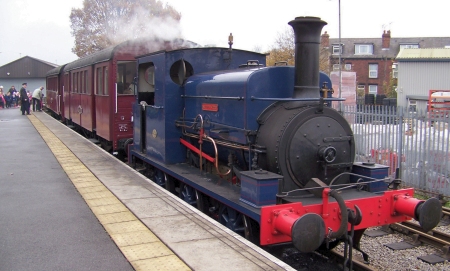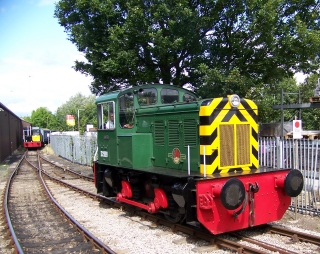

Founded 1953
The Middleton Railway
Amid the industrial sprawl of Leeds was the Middleton Colliery Railway, which stemmed from a 17548 Act of Parliament for a wagonway to supply Leeds and its area with coal. By the early l8 hundreds, the system was more than four miles long, and many short branches were built to serve new collieries, fireclay works, coke plants and other industrial premises. The line used to run to Great Wilson Street in the centre of Leeds where supermarket group Asda now has its main offices. From its conception until 1881, its gauge was 4 foot 1 inch, but the standard gauge was then adopted. The system also had connections with both the Midland and Great Northern Railway Systems.
Although ownership of colleries passed to the National Coalboard at nationalisation in 1947, the railway system was owned by the Fireclay Company, and two years later, the northern section from Moor Road to the city’s gasworks was abandoned.
In February 1958, the NCB stunned the local community by announcing the closure of Middleton Pit. The timing was awful as it was the line’s Bi-centennial year. The mine had become a loss maker and needed extensive maintenance and repairs. The track also needed re-laying, in addition, the lease of the land the line stood upon was due to expire and it was cheaper to use lorries – a factor which was to later feature in the death of many branch lines and railway born goods services.
It was in September 1959 that a group of students from Leeds University, Union Railway Society, (note how students were instrumental in saving three of the first four lines) had the idea of acquiring a short section of track and preserving locomotives and stock, although the University authorities looked down on such an idea.
An appeal for help through local papers brought little support or financial donations, but having formed the Middleton Railway Preservation Society, the hundred or so members led by Dr Fred Youell, pressed on and became involved in discussions with BR and the owners of the line, the Middleton Fireclay Company, which was preparing to liquidate its assets. Two local firms, gas engineers Clayton Son and Co. and scrapmerchants Robinson and Birdsell, bought the line from the Fireclay Company and donated it to the Society with very few conditions.
The Society knew there was potential to run freight services to some of the local firms still rail-served, and also passenger trains at weekends. In preparation for the latter, it acquired the last double-deck coach from the Swansea and Mumbles Railway, which through help from BR was dismantled and delivered to the railway on three bogie wagons, it took members ten days to re-erect it.
The Hunslet Engine Company offered the railway a vintage diesel shunter, one of the first batch supplied to the LMS in 1932, and John Alcock as the loco became named, was mated with the Swansea and Mumbles coach, and worked the first train under the control of the Preservationists on June 20th, 1960, carrying 7500 passengers between Hunslet Moor and Parkside as part of a student Rag Week.
In order to begin freight services the poor quality track had to be repaired and some double-track sections were singled. Freight resumed on an experimental basis on September 1, 1960 and on a regular basis in October, and by the end of the year, tonnage equivalent to 16000 per year had been carried, with trains operating six days a week.
The next year, tonnage was 12500 and as the line increased in popularity, membership rose to 250. New locos arrived in the form of an ex-BR Eastern Region Sentinel No. 68153 and an Avonside 0-6-OST, Swansea, originally from the Swansea and Mumbles Railway, which had been donated by South Wales Steelworks.
In 1965, the railway hit a daily freight traffic record when, in a period of little more than twelve hours, volunteers handled 51 wagons on a wintry January day. More remarkable was that apart from working in blizzard conditions, the only available motive power, the Sentinel, 0-4-0VBT, could only haul four wagons at a time.
Latest information can be obtained from www.middletonrailway.org.uk

